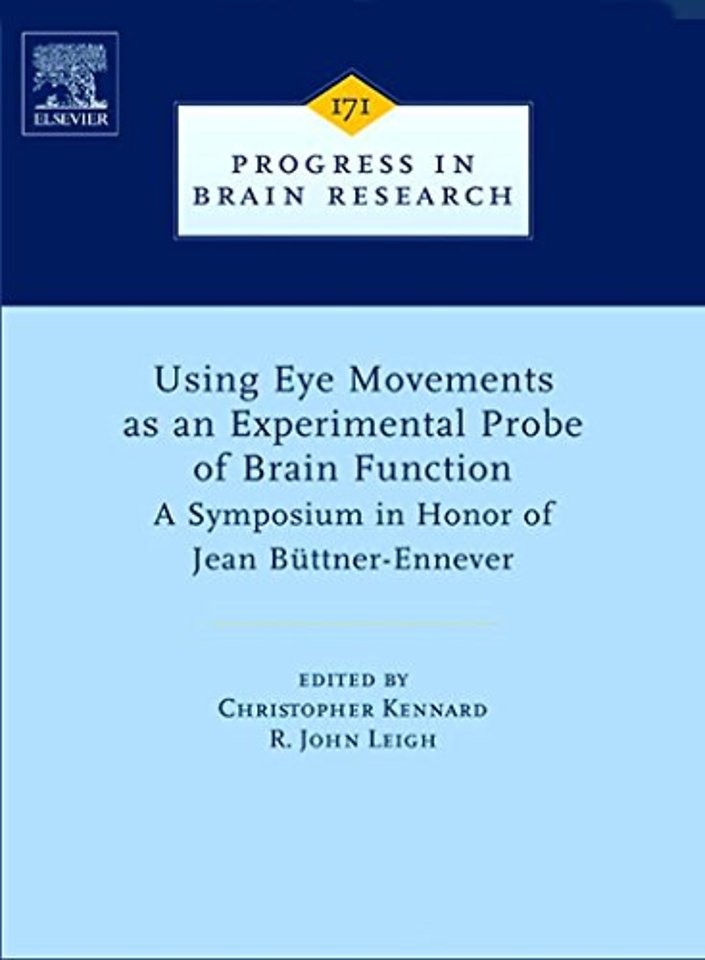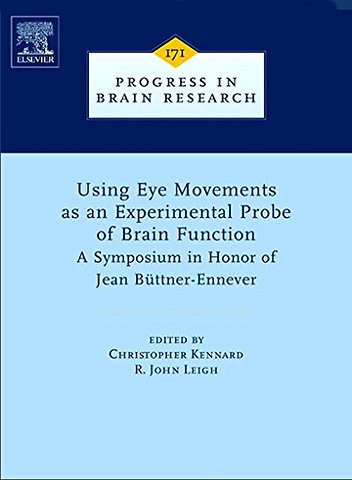Section 1: Using Novel Techniques to Define the Neural Substrate for Eye Movements <br><br>Jean Büttner-Ennever, Munich: Re-mapping the oculomotor system<br>Joseph Demer, Los Angeles: Using high-definition MRI to re-define the mechanics of eye rotations<br>Michael Goldberg, New York: The cortical representation of oculomotor proprioception<br>David Zee, Baltimore: How new knowledge of the anatomy of the eye muscles and their innervation translates into improved treatment of patients with ocular motor palsies<br>Paul Knox, Liverpool: Testing the influences of extraocular proprioception in humans <br>James Sharpe, Toronto: Reinterpreting palsies of the ocular motor nerves <br>Dominik Straumann: New insights into trochlear nerve palsy<br>Paul May: Anatomical insights into peripheral gaze control<br>Louis Dell'Osso: How disrupting ocular proprioception can be therapy for congenital nsyatgmus<br><br><br>Section 2: New Insights into Brainstem Generation of Ocular Motor Commands<br>Anja Horn, Munich: New insights into the circuitry and pharmacology of the brainstem reticular formation<br>Edward Keller, San Francisco: Using multiple electrode arrays to map moving fields of neural activity in the superior colliculus<br>Paul Gamlin, Birmingham: Synthesis of vergence control by brainstem circuits<br>Holger Rambold, Lübeck: Disturbances of vergence and saccadic eye movements by human brainstem lesions<br>Christoph Helmchen, Luebeck: Understanding how the cerebellar disease could cause saccadic oscillations<br>Stefano Ramat, Pavia: A brainstem network that accounts for abnormal saccades<br>Mark Gibson, Belfast: Human saccadic disorders and their brainstem mechanisms<br>Richard Clement: A black-box approach to saccadic disorders<br><br>Section 3: Using Eye Movements as an Index of Transformation of Signals by the Cerebellum<br>Stephen Highstein, St. Louis: How the cerebellar transforms sensory inputs into motor commands<br>Albert Fuchs, Seattle: How visual and motor signals interact in the cerebellum<br>John Stahl, Cleveland: How mutant mice with calcium channel defects provide insight into the cerebellar role in balance<br>Michael Strupp, Munich: How knowledge about calcium channel disorders translates into treatment of human cerebellar disease<br>Bernard Cohen, New York: Cerebellar governance of vestibular mechanisms<br>Mark Walker, Baltimore: Influence of cerebellar nodulus on translational vestibulo-ocular reflex<br>Ulrich Büttner, Munich: Control of smooth-pursuit eye movements by cerebellum<br>Robert McCrea, Chicago: Influence of cerebellum on combined eye-head tracking<br>Adolfo Bronstein, London: Degenerative disorders that affect the cerebellar control of eye movements<br><br>Section 3: Using Eye Movements as a Probe of Sensory-Motor Processing<br>Frederick Miles, Bethesda: How the brain uses visual motion as we move through the environment<br>Peter Hoffmann: How motion signals are encoded in visual areas<br>Michael Mustari, Atlanta: How disturbed maturation of visual motion processing leads to nystagmus in infancy<br>Thomas Brandt: How vestibular and visual inputs may be abnormally processed in cerebral cortex<br>Richard Abadi, Manchester: Visual perceptions during ocular oscillations<br>Michael Gresty, London: Self-motion, gaze control and visual perception<br>Bernhard Hess, Zurich: Understanding interactions between responses to head rotations and translations<br>Michael Halmagyi, Sydney: Probing otolith-ocular reflexes using novel stimuli in humans<br>Sergei Yakushin, New York: How visual inputs from subcortical pathways influence perception of self-motion<br><br>Section 4: Using Eye Movements as a Probe of Cognition <br>James Lynch, Jackson: Concepts of the contribution of cerebral cortex based on new anatomical findings <br>Kikuro Fukushima, Sapporo: Prediction, eye movements, and the frontal lobes<br>Rene Müri, Bern: Using transcranial magnetic stimulation to probe decision-making and memory <br>Parashkev Nachev, London: Using functional imaging to during conflict resolution and free choice<br>Charles Pierrot-Deseilligny, Paris: Using saccades to probe different forms of memory<br>Christopher Kennard, London: Role of the supplementary eye fields in countermanding saccades<br>Masud Husain, London: Using eye movements to probe shifts of instruction set<br>Graham Barnes, Manchester: Using smooth tracking movements to probe prediction<br>R. John Leigh, Cleveland, Ohio: Eye movements: The meaning of it all (Epilogue)<br>

